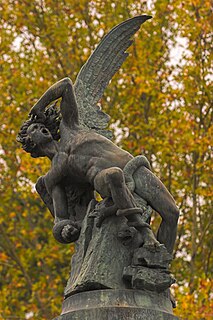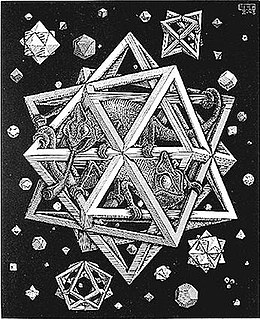 W
WBoy Bitten by a Lizard is a painting by the Italian Baroque painter Caravaggio. It exists in two versions, both believed to be authentic works of Caravaggio, one in the Fondazione Roberto Longhi in Florence, the other in the National Gallery, London.
 W
WFerdinand Lured by Ariel is an 1850 painting by John Everett Millais which depicts an episode from Act I, Scene II of Shakespeare's c. 1611 play The Tempest. It illustrates Ferdinand's lines "Where should this music be? i' the air or the earth?". He is listening to Ariel singing the lyric "Full fathom five thy father lies". Ariel is tipping Ferdinand's hat from his head, while Ferdinand holds on to its string and strains to hear the song. Ferdinand looks straight at Ariel, but the latter is invisible to him.
 W
WThe Fuente del Ángel Caído is a fountain located in the Buen Retiro Park in Madrid, Spain.
 W
WThe Hornsby Water Clock, titled Man, Time and the Environment is a piece of kinetic sculpture, a decorative fountain and a functional clock in the Florence Street pedestrian mall in Hornsby, New South Wales, Australia. Unveiled in 1993, the sculpture was designed and engineered by Victor Cusack and constructed of bronze, stainless steel and glass by Victor and his foundry floor manager Rex Feakes. Construction, including alterations to the mall, cost over A$1 million and took two and half years; thereafter, chicken bones and other carelessly discarded items caused many breakdowns before the water filtration system was upgraded.
 W
WThe Quarrel of Oberon and Titania is an oil on canvas painting by the Scottish artist Sir Joseph Noel Paton. Painted in 1849, it depicts the scene from William Shakespeare's comedy play A Midsummer Night's Dream, when the fairy queen Titania and fairy king Oberon quarrel; Oberon was considered the King of the fairies in medieval and Renaissance literature. When exhibited in Edinburgh during 1850, it was declared as the "painting of the season". It was acquired by the National Gallery of Scotland in 1897, having initially been bought by the Royal Association for Promoting the Fine Arts in Scotland during 1850. An earlier version of this painting was Paton's diploma picture, which was submitted to the Royal Scottish Academy in 1846; they paid £700 for it.
 W
WReptiles is a lithograph print by the Dutch artist M. C. Escher first printed in March 1943. It touches on the theme found in much of his work of mathematics in art.
 W
WApollo Sauroktonos is the title of several 1st - 2nd century AD Roman marble copies of an original by the ancient Greek sculptor Praxiteles. The statues depict a nude adolescent Apollo about to catch a lizard climbing up a tree. Copies are included in the collections of the Louvre Museum, the Vatican Museums, and the National Museums Liverpool.
 W
WStars is a wood engraving print created by the Dutch artist M. C. Escher in 1948, depicting two chameleons in a polyhedral cage floating through space.
 W
WThe Tilled Field is a 1923–1924 oil-on-canvas painting by Catalan painter Joan Miró, depicting a stylised view of his family's farm at Mont-roig del Camp in Catalonia. The painting shows development from Miró's earlier works, such as The Farm, and is considered to be one of his first Surrealist works, created around the same time as the more abstracted Catalan Landscape . It is held by the Solomon R. Guggenheim Museum in New York.